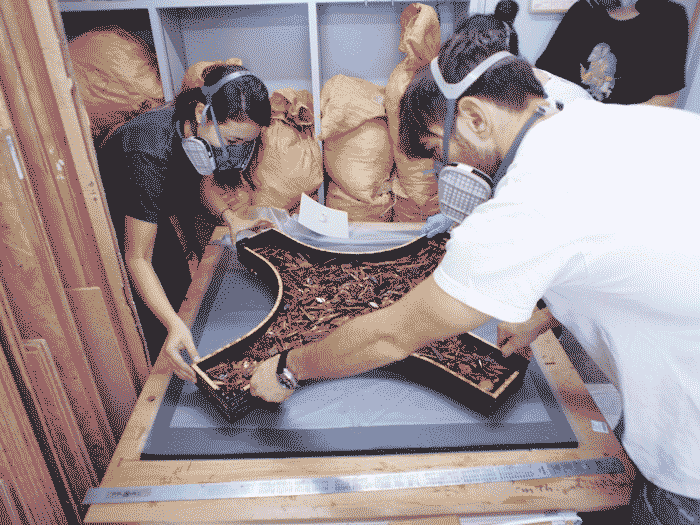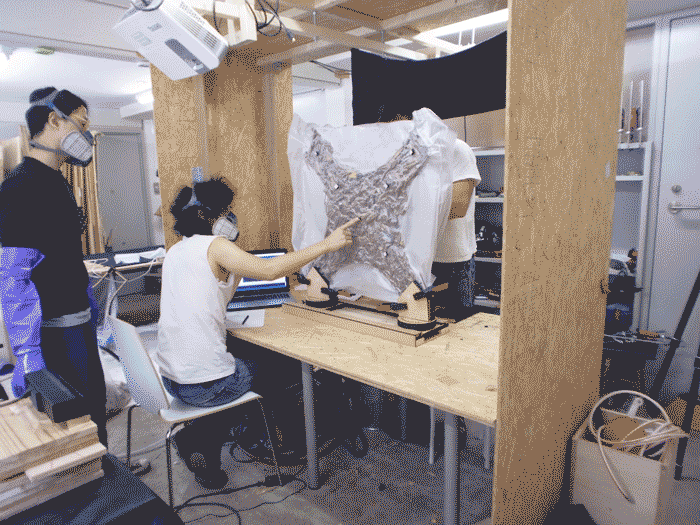The two images show the stages of panel production used for the 2016 pavilion project.
Panel Bag Sealing Steps (image 1):

Step 1: Wood chips are mixed with resin and poured into a pre-made wooden frame, which sits on top of a double layer of plastic bags to decrease possibility of holes forming.
Step 2: The frame is removed and another double layer of plastic is put on top of the wood chips. The outer bag is then closed with a heat sealer. Two adjacent lines of sealant help to prevent air leakage during vacuuming.
Step 3: The panel is vacuumed and any small holes that may be produced due to the combination of sharp wood chips and high pressure are taped.
Step 4: Reflective marker guidance system tracking points are applied. This is for the panel shaping process, which comes next.
Panel Shaping Process (image 2):

A Kinect camera uses an infrared projector to detect the contrast between reflective markers and the background. When it finds a point of contrast it produces a tackable point, which is then compared to predetermined points in the computer model. The manipulation of the panel is articulated according to the difference between the points on the model and the points (reflective markers) on the actual panel. After the panel has been shaped, the points are re-scanned to quantify the difference between the physical and computer models. A light-absorbing cloth is used as a backdrop to create total contrast between the panel and its environment. This allows the physical panel to be easily tracked and manipulated in space.
